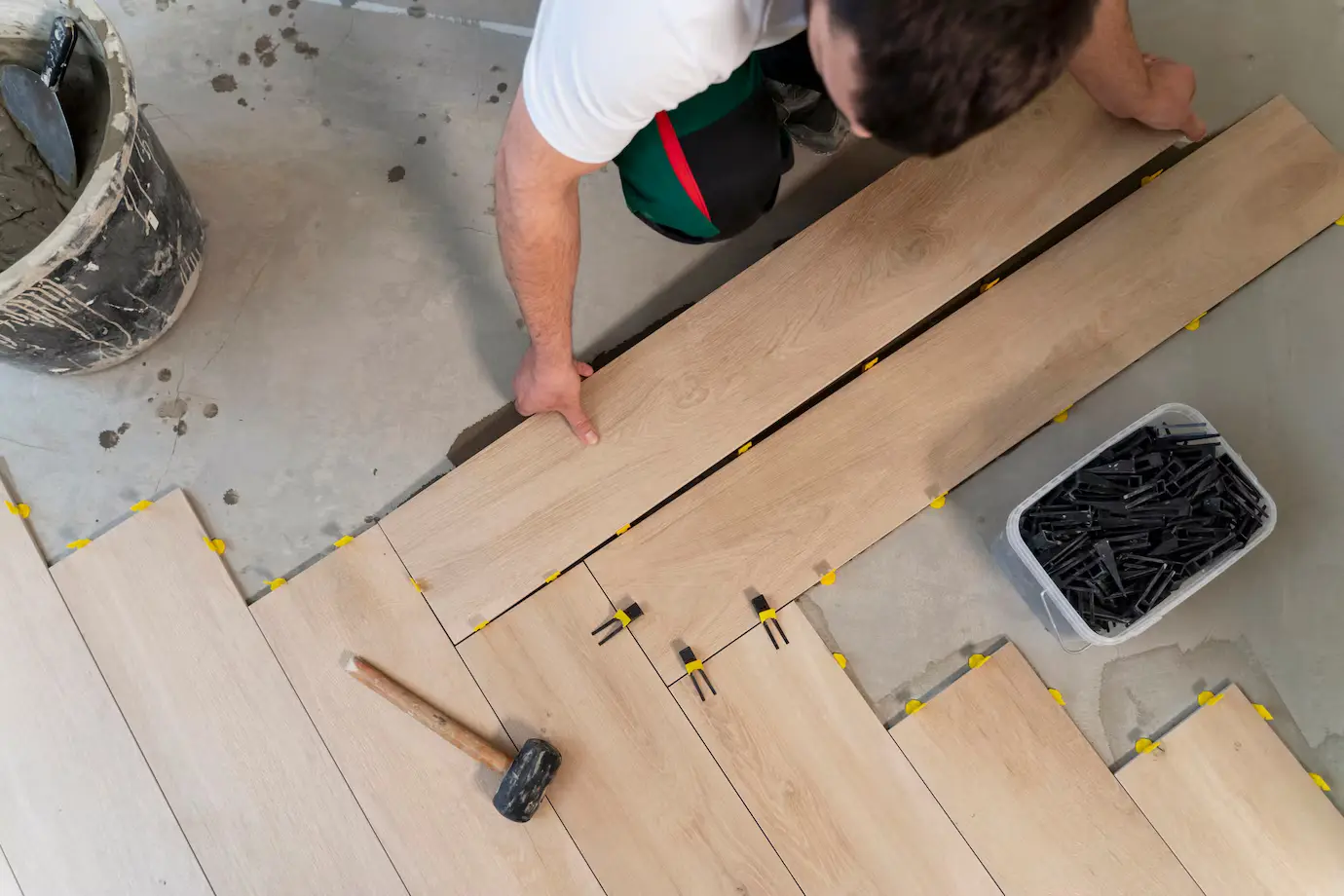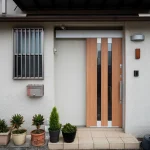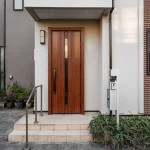Choosing the right flooring for your home is one of the most important decisions you’ll make during a renovation or build. It’s not just about aesthetics—your floors need to stand up to daily wear and tear, fit your budget, and suit your lifestyle. As Laura Smith, an interior designer at HGTV, puts it, “Flooring is an investment that can significantly impact the aesthetics, functionality, and value of your home.”
But with so many options—hardwood, laminate, vinyl, tile, carpet, and more—how do you decide what’s best for your space? In this guide, we’ll break down the pros and cons of each flooring type, share personal anecdotes, and provide unique insights to help you make an informed choice.
Why Flooring Matters
Flooring is the foundation of your home’s design. It sets the tone for each room, influences how the space feels, and plays a huge role in your home’s functionality. I remember when my family renovated our living room. We switched from old, stained carpet to sleek hardwood floors, and the transformation was incredible. The room felt brighter, more spacious, and easier to clean—especially with two kids and a dog running around.
But flooring isn’t just about looks. It’s about practicality, too. The right flooring can make your life easier, while the wrong choice can lead to headaches (and costly repairs) down the road.
Flooring Options: At a Glance
| Flooring Type | Pros | Cons | Best For |
|---|---|---|---|
| Hardwood | Timeless, elegant, durable, adds value | Expensive, prone to scratches and water damage | Living rooms, dining rooms, bedrooms |
| Laminate | Affordable, durable, DIY-friendly | Not waterproof, difficult to repair | High-traffic areas like hallways and family rooms |
| Vinyl | Waterproof, versatile designs, comfortable underfoot | Lower-end products may lack durability, environmental concerns | Kitchens, bathrooms, basements |
| Tile | Durable, water-resistant, easy to clean | Cold and hard, grout requires maintenance | Bathrooms, kitchens, entryways |
| Carpet | Soft, warm, reduces noise | Stains easily, harbors allergens | Bedrooms, living rooms, basements |
| Engineered Wood | Looks like hardwood, more stable, easier to install | Limited refinishing, quality varies | Living rooms, dining rooms, bedrooms |
| Bamboo | Eco-friendly, durable, modern look | Not ideal for wet areas, quality varies | Living rooms, offices, bedrooms |
| Cork | Comfortable, eco-friendly, excellent insulation | Prone to scratches, not suitable for wet areas | Bedrooms, home offices, playrooms |
Key Considerations for Choosing Flooring
| Factor | What to Consider | Tips |
|---|---|---|
| Lifestyle | Kids, pets, high traffic | Choose durable, easy-to-clean options like vinyl or tile |
| Budget | Upfront costs vs. long-term savings | Balance quality and affordability; consider maintenance costs |
| Room Usage | Water resistance, comfort, noise reduction | Use tile in bathrooms, carpet in bedrooms |
| Aesthetic and Design | Colors, textures, overall style | Match flooring to your home’s décor; experiment with patterns |
| Durability | Scratch resistance, water resistance, lifespan | Prioritize durability in high-traffic areas |
| Health & Environment | Low-VOC options, eco-friendly materials | Choose sustainable options like bamboo or cork |
Quick Guide to Flooring Selection
- For Elegance: Choose hardwood or engineered wood.
- For Budget-Friendly: Opt for laminate or vinyl.
- For Water Resistance: Go with tile or luxury vinyl.
- For Comfort: Pick carpet or cork.
- For Eco-Friendliness: Consider bamboo or cork.
Types of Flooring: Pros, Cons, and Best Uses
1. Hardwood Flooring
Hardwood is the gold standard of flooring. It’s timeless, elegant, and adds value to your home. My grandmother’s house had beautiful oak floors that creaked with character, and I always felt a sense of warmth and nostalgia whenever I visited.
Pros:
- Aesthetic Appeal: Hardwood floors are stunning and never go out of style.
- Durability: With proper care, they can last for decades.
- Variety: Available in numerous wood species, finishes, and stains.
Cons:
- Cost: One of the more expensive flooring options.
- Maintenance: Vulnerable to scratches and water damage.
Best For: Living rooms, dining rooms, and bedrooms.
2. Laminate Flooring
Laminate is a budget-friendly alternative to hardwood. It mimics the look of wood (or even stone) but is more durable and easier to install.
Pros:
- Affordable: Much cheaper than hardwood.
- Durability: Resistant to scratches and dents.
- DIY-Friendly: Often features a click-and-lock design.
Cons:
- Moisture Sensitivity: Not ideal for wet areas like bathrooms.
- Repair Challenges: Difficult to fix if damaged.
Best For: High-traffic areas like hallways and family rooms.
3. Vinyl Flooring
Vinyl has come a long way from the basic sheets of the past. Today’s luxury vinyl planks (LVP) and tiles (LVT) are stylish, durable, and waterproof.
Pros:
- Versatility: Available in wood, stone, and even abstract designs.
- Waterproof: Perfect for kitchens, bathrooms, and basements.
- Comfort: Softer underfoot compared to tile.
Cons:
- Quality Variation: Lower-end products may not last as long.
- Environmental Concerns: Some vinyl products contain harmful chemicals.
Best For: Kitchens, bathrooms, and laundry rooms.
4. Tile Flooring
Tile is a go-to choice for areas that need water resistance, like bathrooms and kitchens. When we remodeled our bathroom, we chose ceramic tiles with a Mediterranean pattern. It transformed the space and stood up to daily use.
Pros:
- Durability: Resistant to water, stains, and scratches.
- Design Options: Available in countless colors, shapes, and sizes.
- Easy Maintenance: Simple to clean and maintain.
Cons:
- Cold and Hard: Can be uncomfortable to stand on for long periods.
- Grout Maintenance: Grout lines can stain and require cleaning.
Best For: Bathrooms, kitchens, and entryways.
5. Carpet Flooring
Carpet adds warmth and comfort, making it a popular choice for bedrooms and living rooms. In our home, the kids’ playroom has plush carpet that muffles noise and provides a soft surface for playtime.
Pros:
- Comfort: Soft underfoot and provides insulation.
- Noise Reduction: Great for reducing sound transmission.
- Variety: Available in countless colors and textures.
Cons:
- Maintenance: Can stain easily and requires regular vacuuming.
- Allergens: Can harbor dust mites and allergens.
Best For: Bedrooms, living rooms, and basements.
6. Engineered Wood Flooring
Engineered wood offers the look of hardwood with added stability. It’s made with a top layer of real wood over a plywood base, making it less prone to warping.
Pros:
- Appearance: Looks like hardwood but is more dimensionally stable.
- Installation: Easier to install than solid wood.
- Cost: Generally cheaper than solid hardwood.
Cons:
- Resurfacing: Can only be refinished a limited number of times.
- Quality Variation: Lifespan depends on the quality of the product.
Best For: Living rooms, dining rooms, and bedrooms.
7. Bamboo Flooring
Bamboo is an eco-friendly option that’s durable and stylish. A friend of mine installed bamboo floors in her eco-conscious home, and they added a unique, modern touch.
Pros:
- Eco-Friendly: Made from a fast-growing, renewable resource.
- Durability: Comparable to hardwood in strength.
- Aesthetic: Offers a unique, modern look.
Cons:
- Water Sensitivity: Not ideal for wet areas.
- Quality Variation: Performance depends on manufacturing.
Best For: Living rooms, offices, and bedrooms.
8. Cork Flooring
Cork is another eco-friendly option, known for its comfort and unique look. It’s made from the bark of cork oak trees, which regenerates, making it sustainable.
Pros:
- Comfort: Soft underfoot and comfortable to walk on.
- Insulation: Provides excellent thermal and sound insulation.
- Eco-Friendly: Harvested sustainably from cork trees.
Cons:
- Durability: Can be prone to scratches and dents.
- Water Sensitivity: Not suitable for very wet areas.
Best For: Bedrooms, home offices, and playrooms.
Key Considerations When Choosing Flooring
1. Lifestyle
Your daily activities and household dynamics matter. If you have kids or pets, durability and ease of cleaning are key. For example, in our home, we chose tile for the kitchen because it’s resilient and easy to maintain.
2. Budget
Flooring costs vary widely. Brian Miller, a contractor, advises, “Think long-term! While some materials may be initially cheaper, their maintenance costs or shorter lifespan might outweigh the upfront savings.”
3. Room Usage
Different rooms have different needs. Bedrooms benefit from the warmth of carpet, while bathrooms and kitchens require water-resistant materials like tile or vinyl.
4. Aesthetic and Design
Flooring can dramatically influence the overall look of your home. Michael Jones, an architect, encourages homeowners to “experiment with textures and colors! Flooring can be a great way to add personality to your space.”
5. Health and Environmental Impact
Consider materials that promote indoor air quality and sustainability. The Environmental Protection Agency (EPA) highlights that low-VOC flooring options can improve indoor air quality.
Final Thoughts
Choosing the right flooring is a balance of aesthetics, functionality, and budget. Whether you’re drawn to the timeless elegance of hardwood, the practicality of vinyl, or the eco-friendliness of bamboo, there’s a perfect flooring solution for every room and lifestyle.
By considering your specific needs and seeking expert advice when needed, you can make a decision that enhances both the beauty and functionality of your home. As Laura Smith said, flooring is an investment—so choose wisely to enjoy its benefits for years to come.










